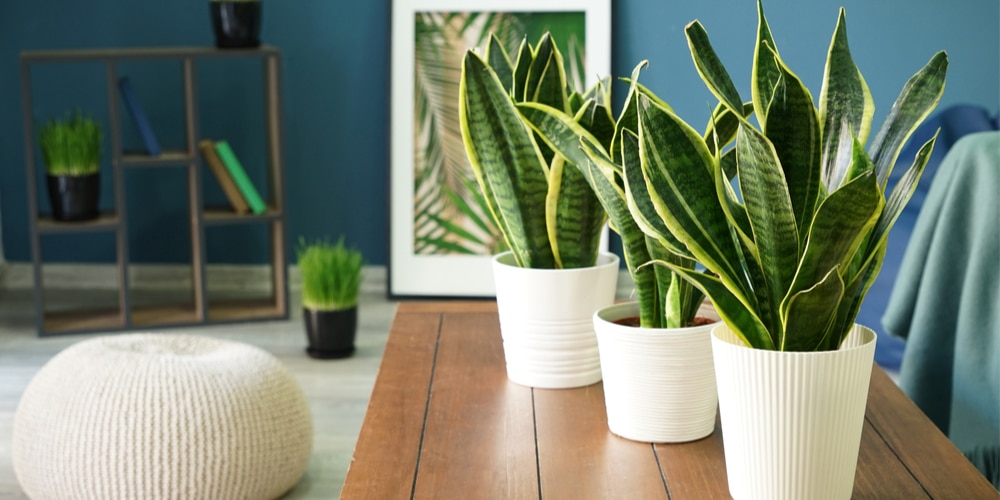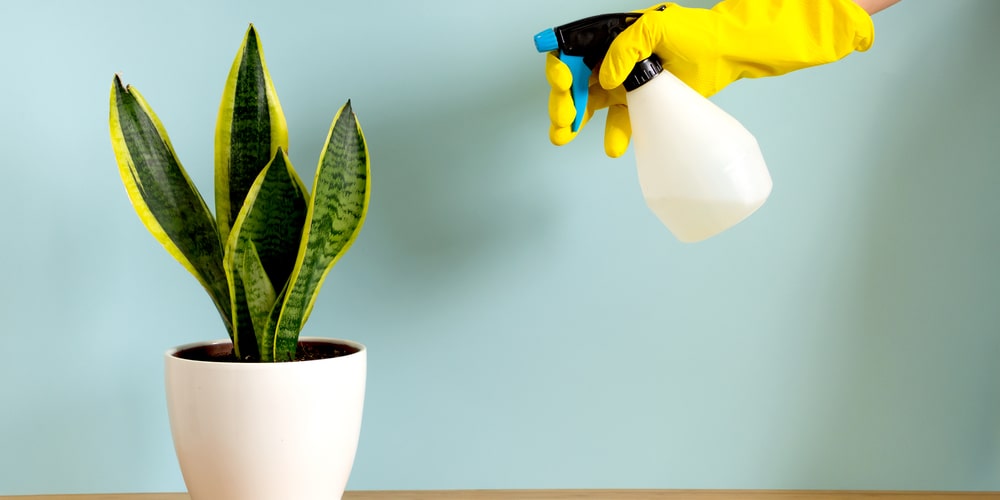A timeless classic in many homes, Dracaena Trifasciata, otherwise known as the Snake Plant or Mother-in-Law’s Tongue is a beloved houseplant known for its no-fuss care and beautiful, sword-shaped leaves.
Let’s take a closer look at how you can grow and care for the tough and versatile plant.
The Snake Plant – An Overview

The Snake Plant is quite unusual since it’s one of the few that has sword-like leaves growing upwards. The flat foliage ends at a tapered tip and usually has a banded pattern, as well as a creamy yellow border.
Most people tend to grow Dracaena trifasciata indoors and as a houseplant to decorate their living space. It’s worth noting that the leaves are toxic to dogs and cats, so it’s best that the plant is out of their reach if you do want to put your snake plant inside.
However, you’ll quickly find the mother-in-law’s tongue a near-indestructible specimen that can thrive even in dimly-lit rooms and spaces.
The evergreen perennial grows in USDA zones 9 through 11 and is native to West Africa. As a houseplant, the snake plant can even live in zones 3 and up as long as it’s relatively warm and receives enough light.
How to Care for the Dracaena Trifasciata
The Snake Plant is one of those specimens that will live even if you neglect them for weeks. If you’ve had a succulent plant before, then you should treat the mother-in-law’s tongue the same way and it will live for years.
It’s lovingly referred to as ‘indestructible’ by many owners because the snake plant can go on for weeks without needing water or light. You can place the snake plant anywhere in the house and it will grow and multiply there.
However, the best environment for a Dracaena trifasciata is an area that gets bright, indirect light and sparse watering.
Be careful not to overwater your snake plant, as it’s the most common mistake plant owners do with theirs. The leaves actually store water from the soil and hold it for long periods of time, which means you don’t need to irrigate as often. As a general rule, you should provide water once every two weeks indoors, or once a week or more if you place your snake plant outdoors.
The snake plant can tolerate a few hours of direct sunlight but not all day since it can burn the beautiful leaves. You’ll find that the Dracaena trifasciata grows faster in a partial sun environment than in a shaded location, or a window that gets sunlight peeking through inside.
What is Dracaena Trifasciata Good For?
The African Bowstring Hemp species is a truly versatile plant, able to adapt to a wide range of environments. Its low light characteristic makes it the perfect plant to place in areas that don’t get too much light. You can liven up any space in your house with a potted snake plant, and it won’t mind sitting there.
Dracaena trifasciata is an air purifier houseplant that can remove carbon dioxide, trichloroethylene, benzene, and formaldehyde in the air. Aesthetically, its foliage is interesting and serves to green up indoor space.
Those who are looking for an easy-to-care plant will love Dracaena trifasciata as you only need to water it twice a month or so. Fertilization is not required, and the plant species are not prone to any pests or diseases.
How to Get More Snake Plants
Aside from being incredibly easy to care for, you can turn a single snake plant into several ones in a method known as propagation.
You can propagate your snake plant by division, pup offsets, and leaf cuttings. With the leaf cutting method, you probably won’t end up with the same parent plant as the new plant will likely revert to a non-variegated specimen.
After some time you’ll see miniature leaves peeking out of the soil, which will turn into mature snake plants. You can dig up your plant and separate these offsets, then put it in a well-draining medium or container. In the same vein, you can divide your snake plants and use garden shears or large scissors to separate the roots.
Caring for these offsets should be the same way as an adult snake plant specimen. Water only occasionally and give it bright indirect light.
